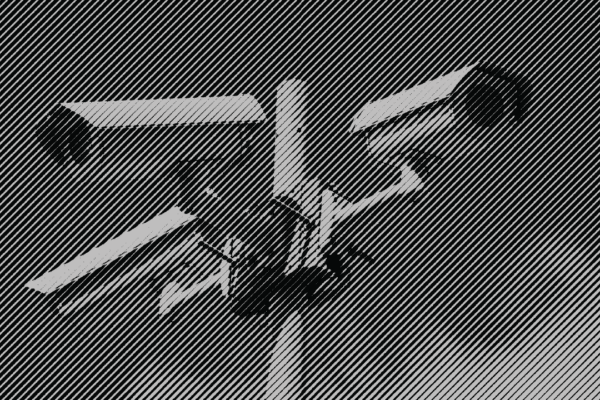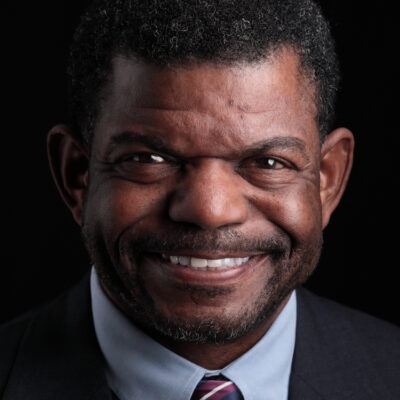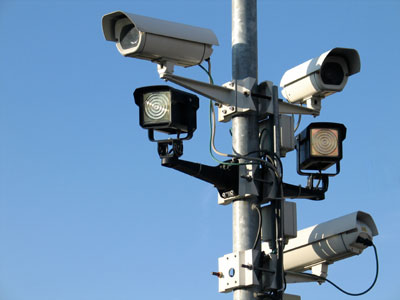As I sat in a packed meeting room at Detroit Public Safety Headquarters last month, watching the Board of Police Commissioners (BOPC) deliberate over a proposed facial recognition technology policy, it occurred to me that few, if any, of the residents there that day came to ask for more police surveillance.
People who live or work in the city—and pay taxes as a result—should have a say in whether any of their money is used to pay for cameras and other technology to track their comings and goings, ideally before government purchasing contracts have been signed and sealed and the surveillance technology has been delivered. This week, Detroit City Council President Pro Tem Mary Sheffield will be introducing an ordinance that would mandate just that.
Sheffield’s proposed Community Input Over Government Surveillance (CIOGS) ordinance establishes strong guidelines for city council oversight and public input into the purchase and use of any surveillance technology. The ACLU worked with Sheffield and other city officials to draft the policy, as part of our Community Control Over Police Surveillance project.
That project is an ACLU nationwide initiative that empowers residents to work with their city councils and other officials to make decisions about if and how surveillance technologies are acquired and used. As with the model policy developed by the ACLU, Sheffield’s proposed ordinance also includes strong monitoring and reporting provisions. If the council approves its CIOGS ordinance, Detroit will join more than a dozen other municipalities, including Grand Rapids, Seattle, Nashville, and San Francisco that have passed similar laws in recent years.
The proposal comes at a pivotal time in the growing debate over surveillance and security in our city. The Detroit City Council recently approved a $4 million expansion of the police department’s real-time crime center to improve its capacity to accommodate Project Green Light, a program where green lights are placed outside buildings of participating partners, who purchase equipment and pay a monthly fee to have surveillance cameras outside their businesses and other locations around the city. The nearly 600 cameras now in operation stream into the Detroit Police Department’s (DPD) real-time crime center. I am very sympathetic for those Detroiters who support Project Green Light because they don’t feel safe in their neighborhood, but they should not have to sacrifice their First, Fourth or Fourteenth Amendment rights for perceived security.
Furthermore, Detroiters weren’t demanding that the city invest in facial recognition software in 2017, when council granted DPD $1 million to purchase the technology. The software allows the DPD to use the network of Project Green Light cameras it controls across the city to run facial recognition scans of people as they move about the city.
The DPD has claimed that it has not been using the technology in ways that violate civil rights or civil liberties. Granted, the policy that the BOPC recently passed is a marked improvement from the proposal DPD Chief James Craig introduced initially. It includes some safeguards to address flaws inherent in the software, namely the high rate of misidentification of people of color and women.
But those checks rely on trusting police at a time when the department is dealing with 54 officers disciplined for being “untruthful,” according to a Sept. 23 story in The Detroit News. While that represents only 2 percent of Detroit’s nearly 2,500 sworn officers, Craig stated in the same article that two percent is too many.
We became involved in the facial recognition issue when community activists came to us with complaints about DPD’s use of the technology. Most recently, we filed a public records request with the city on behalf of a diverse coalition that includes 17 other organizations. We asked for documentation related to what the police department has been doing with facial recognition software since 2017, including whether the department has been sharing its data with U.S. Immigration and Customs Enforcement (ICE), U.S. Customs and Border Patrol (CBP), or in any federal immigration enforcement capacity.
In a city with large, diverse populations of Black and brown people living and working here, these are legitimate concerns. Residual fallout from the strained relations between Black Detroiters and police that ignited the 1967 rebellion are still evident in many neighborhoods. Similarly, the expanded presence of CBP agents in immigrant communities following the 9/11 attacks has created an enduring sense of harassment and undue profiling that has eroded trust. Growing concerns over technology with well-known flaws will only further damage police-community relations.
The police commissioners’ recent approval of the DPD policy covers the equipment that has been purchased. The proposed CIOGS ordinance will cover any future equipment requests, including technology that the department may borrow or be given. If passed, CIOGS would put a mechanism in place to require a more public vetting of the technology and how it would be used, as well as usage and reporting requirements. Most importantly, if the council and public, after receiving full information about a surveillance technology, don’t feel right about its use, they can reject it. Also, any department seeking to acquire new surveillance tools would be required to first educate the council and residents about the capabilities of that tool, both how it will be used and ways in which it cannot, and how the agreed-to guidelines for its use will protect civil rights and civil liberties.
Detroiters came before the BOPC and their concerns were ignored. Sheffield’s proposal would establish a mechanism for ensuring residents will have a full and fair chance to have their voices heard before any other dangerous technologies are forced upon them, and their tax dollars used to pay for it.
Surveillance is no guarantee of security; in fact, for many, constant surveillance is a safety threat in and of itself. Police professionals will tell you that many of the violent tragedies they respond to are the result of issues that surveillance could not prevent. Do we want to make our communities safer? Of course. But to really do that, we need to invest in the things that truly impact lives positively, from cleaner water and air, to better nutrition, physical and mental health care, to improved education and employment opportunities, and safe and reliable transportation to access them all. Community residents should have a say in whether their money is invested in these elements essential to their quality of life or is spent on cameras and other mass surveillance technologies that treat every resident like a suspect and document what happens when quality of life essentials are ignored.



